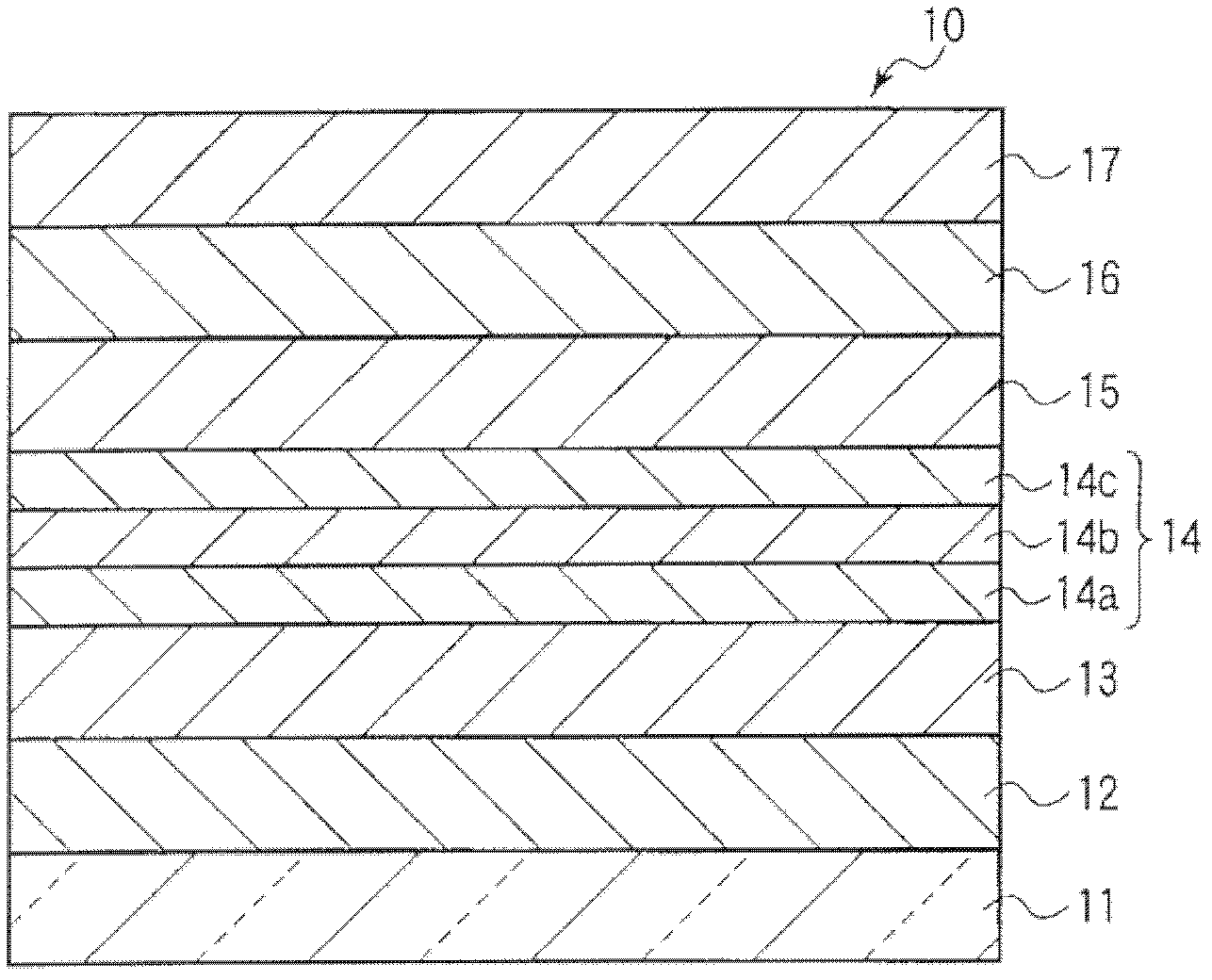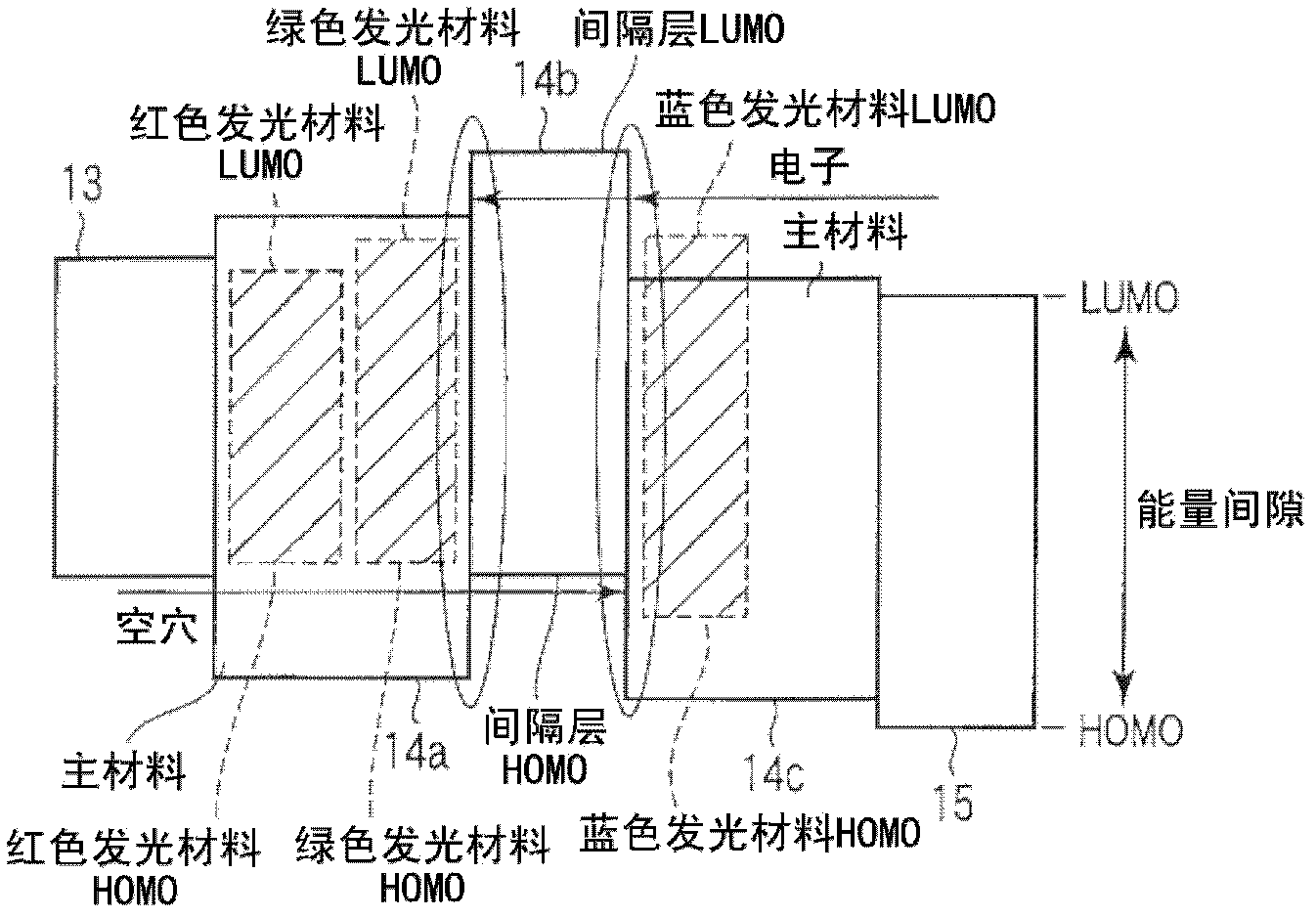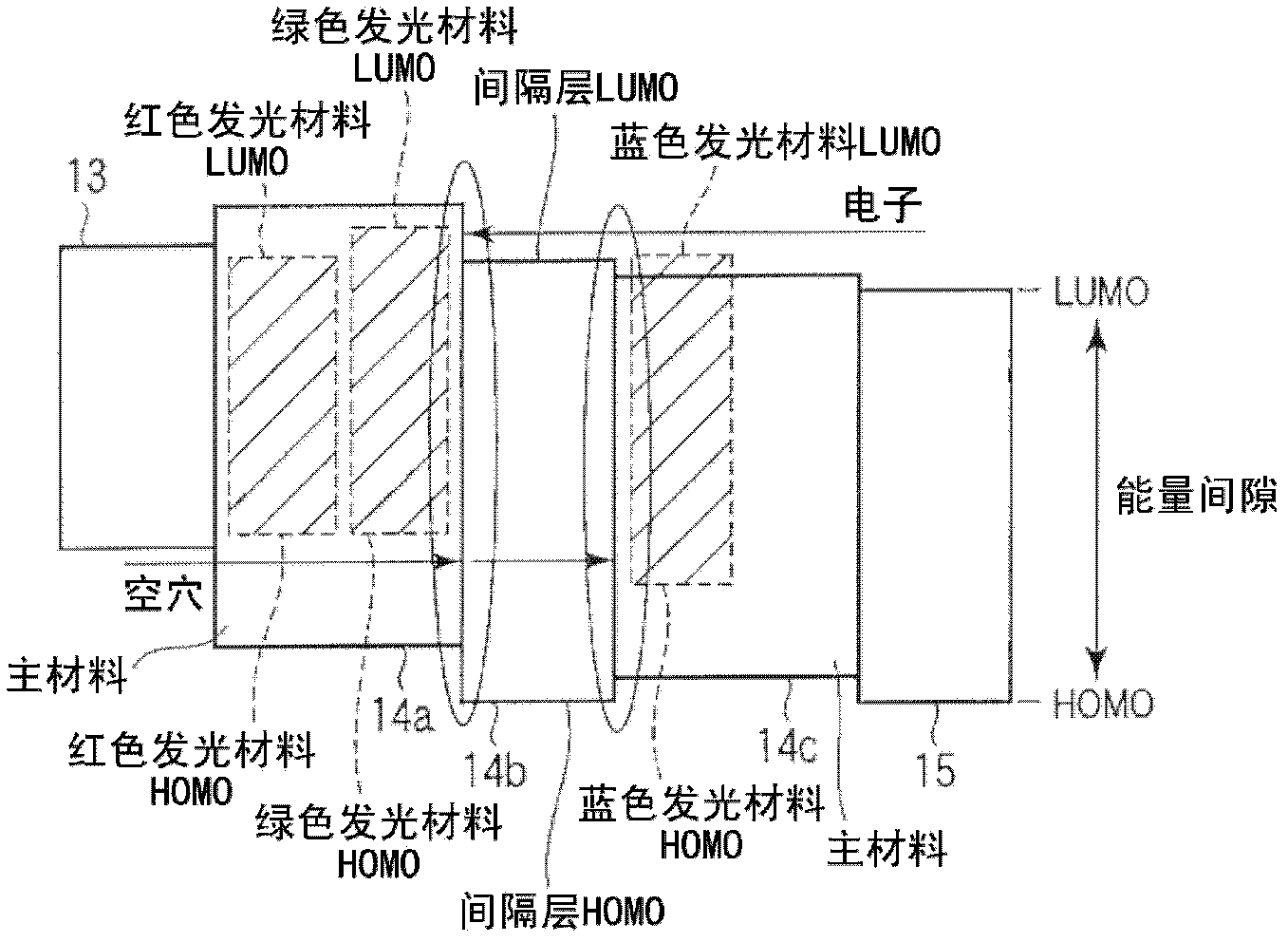Organic light-emitting diode, display and illuminating device
A technology of light-emitting elements and organic electric fields, which can be applied to organic light-emitting devices, parameters of organic light-emitting devices, lighting devices, etc., and can solve problems such as difficulty in practical use, inability to obtain white light, and low luminous efficiency
- Summary
- Abstract
- Description
- Claims
- Application Information
AI Technical Summary
Problems solved by technology
Method used
Image
Examples
no. 1 Embodiment approach
[0022] For the first embodiment of the present invention, refer to figure 2 Be explained. figure 2 It is an energy level diagram of the organic electroluminescence element related to the first embodiment.
[0023] The red-green light-emitting layer 14a has a structure in which a host material having hole transport properties is doped with a red phosphorescent material and a green phosphorescent material. The blue light-emitting layer 14c has a structure in which a blue fluorescent light-emitting material is doped into an electron-transporting host material.
[0024] The spacer layer 14b has an effect of preventing energy transfer from the blue light-emitting layer 14c to the red-green light-emitting layer 14a, and is made of a hole-transporting material. The hole-transporting material contained in the spacer layer 14b is a single material, and the spacer layer 14b does not contain an electron-transporting material.
[0025] When a voltage is applied to the organic EL elem...
no. 2 Embodiment approach
[0049] refer to image 3 A second embodiment of the present invention will be described. image 3 It is an energy level diagram of the organic electroluminescent element according to the second embodiment.
[0050] The red-green light-emitting layer 14a has a structure in which a red phosphorescent material and a green phosphorescent material are doped into a host material having hole transport properties. The blue light-emitting layer 14c has a structure in which a blue fluorescent light-emitting material is doped into a host material having electron transport properties.
[0051] The spacer layer 14b has a function of preventing energy from moving from the blue light-emitting layer 14c to the red-green light-emitting layer 14a, and is made of an electron-transporting material. The electron-transporting material constituting the spacer layer 14b is a single material, and the spacer layer 14b contains a hole-transporting material.
[0052] When a voltage is applied to the o...
Embodiment 1
[0069] A hole-transporting material was used for the spacer layer, and an organic EL device was produced as follows.
[0070] A transparent electrode made of ITO (indium tin oxide) with a thickness of 100 nm was formed as an anode on a glass substrate by vacuum evaporation. As the material of the hole transport layer, α-NPD and TCTA were sequentially deposited by vacuum deposition to form a hole transport layer with a total thickness of 40 nm and 20 nm of 60 nm. As the material of the red-green light-emitting layer, CBP as a bipolar main material, Ir(hflpy)(acac) as a green light-emitting material, and Ir(piq)3 as a red light-emitting material can be used. Control the evaporation rate so that the weight ratio is 69.6:30:0.4, and co-deposit on the hole transport layer using a vacuum evaporation device to form a red-green light-emitting layer with a thickness of 25 nm. The HOMO of the green light-emitting material is 5.2 eV, and the HOMO of the red light-emitting material is 5....
PUM
| Property | Measurement | Unit |
|---|---|---|
| thickness | aaaaa | aaaaa |
| porosity | aaaaa | aaaaa |
| thickness | aaaaa | aaaaa |
Abstract
Description
Claims
Application Information
 Login to View More
Login to View More - R&D
- Intellectual Property
- Life Sciences
- Materials
- Tech Scout
- Unparalleled Data Quality
- Higher Quality Content
- 60% Fewer Hallucinations
Browse by: Latest US Patents, China's latest patents, Technical Efficacy Thesaurus, Application Domain, Technology Topic, Popular Technical Reports.
© 2025 PatSnap. All rights reserved.Legal|Privacy policy|Modern Slavery Act Transparency Statement|Sitemap|About US| Contact US: help@patsnap.com



